ARCHITECTURE
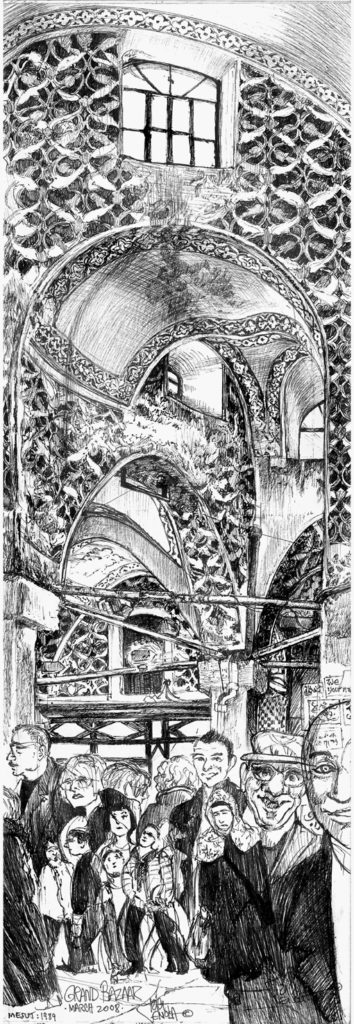
Another writer referred to Istanbul’s Old City as Greco-Roman geometry overlaid with Ottoman clusters. The Bazaar is a fine example of an Ottoman cluster. It was not planned or built all at once but evolved over time, built as needed in a meandering fashion by a nomadic culture.
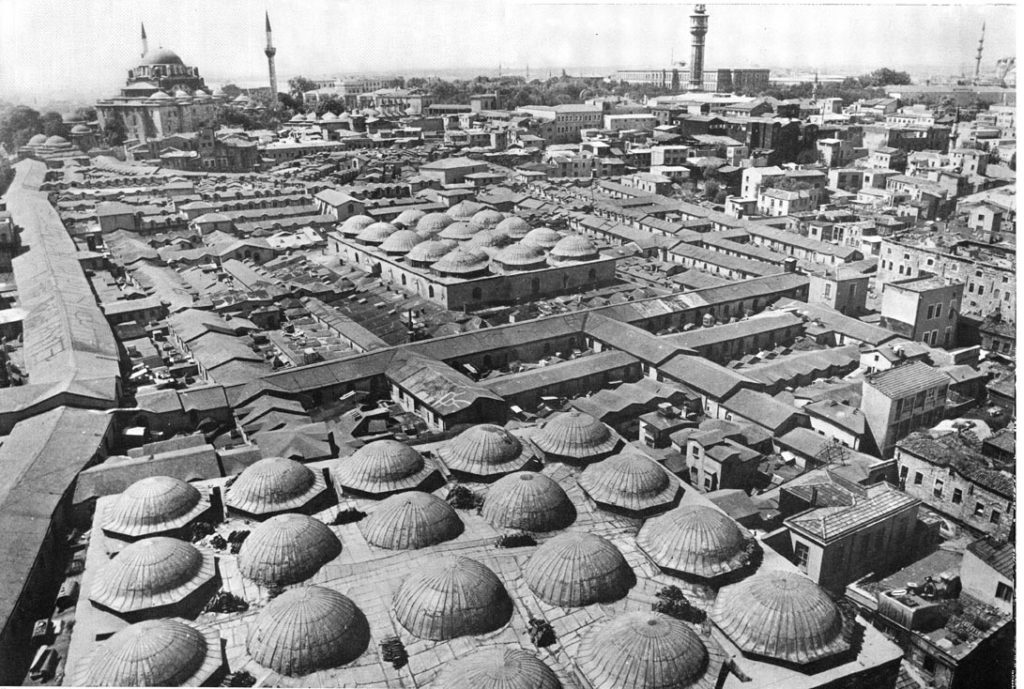
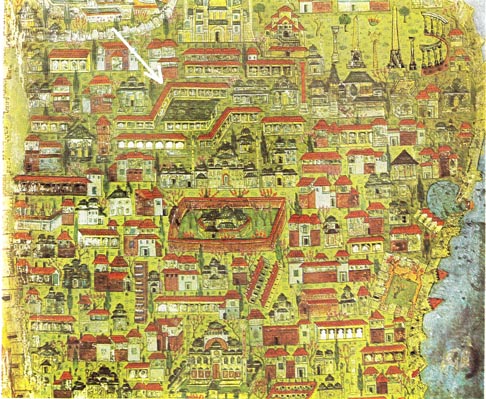
It started from two giant brick enclosures: the Bedestens. This famous 16th Century miniature shows the Cevahir Bedesten, or Inner Bedesten, at upper center. The smaller Sandal Bedesten, just inside the Nuruosmaniye Gate, is harder to see. The streets between are not yet roofed. Notice the Hippodrome with obelisks and Snake Column at upper right, and the City Walls and Marmara at lower right.
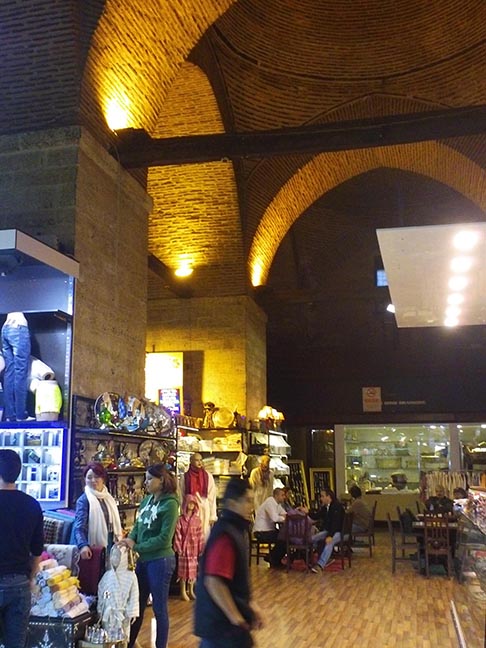
The Sandal Bedesten was named for thread from Bursa the color of sandalwood. Here’s the Sandal Bedesten now. The renovation is boring but the people are not.
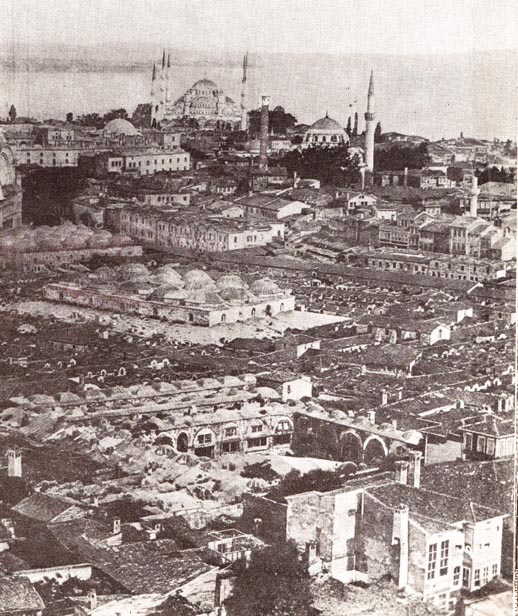
In this 1856 photo, the big Inner Bedesten is at center. It’s now the Old Bazaar. A Byzantine Eagle at the Southern entrance has given rise to a belief that it was originally a Byzantine structure, but the Eagle could have been lifted from somewhere else. These two Bedestens were built by Mehmet the Conqueror. Gradually the streets between were roofed over and the sprawling structure organized into trades. This is the oldest photo ever found of the Bazaar’s outside. That’s the Blue Mosque at the top. The Sandal Bedesten is below it at left, the Great Bedesten at center, and our old friend Buyuk Valide Han down front, outside the Bazaar.
The Inner Bedesten was built with stalls for animals, which are now very tony shops. Here’s Nick in his famous Calligraphy Shop, which features a wall of photos of celebrity customers: movie stars, bestselling authors and world leaders, including the Clintons.
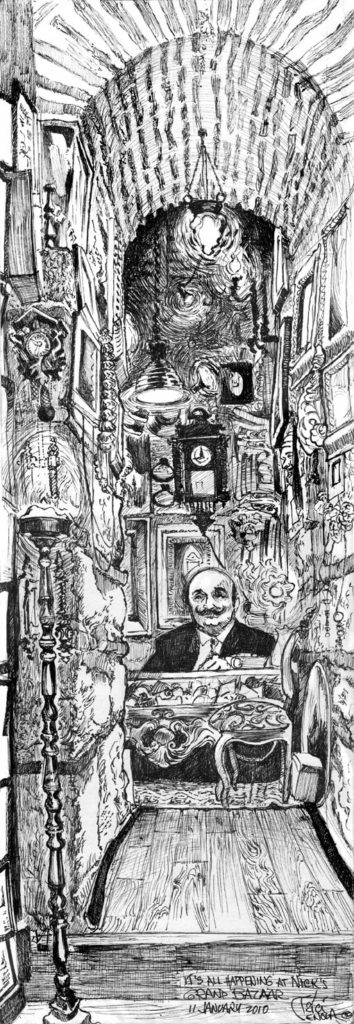
So the Bazaar continued to evolve. Each section was dedicated to a particular trade. Weapons, shoes, cloth, clothing, brass ornaments, jewelry, gold and silver, perfumes, foodstuffs, and slaves.
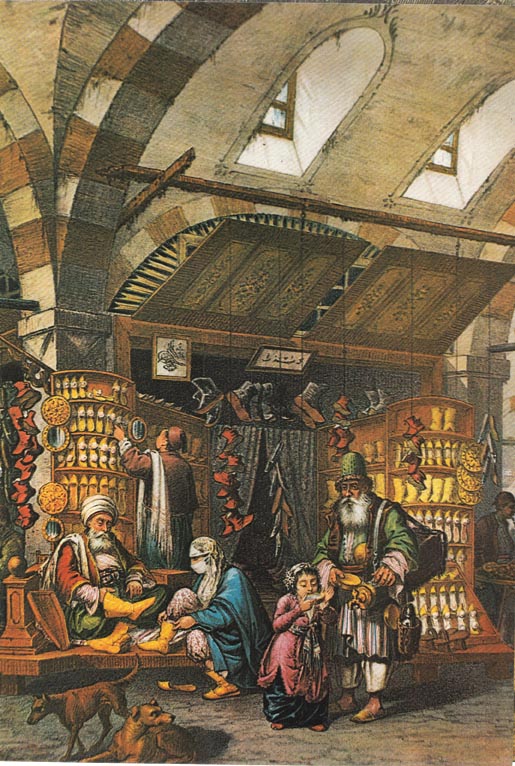
The trades were organized into guilds. Each kept to its own area of the Bazaar. Here’s the Presentation of Artisans to the Sultan, back in the day.

at Ay Medani c1550